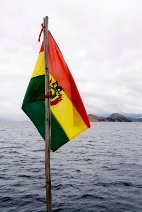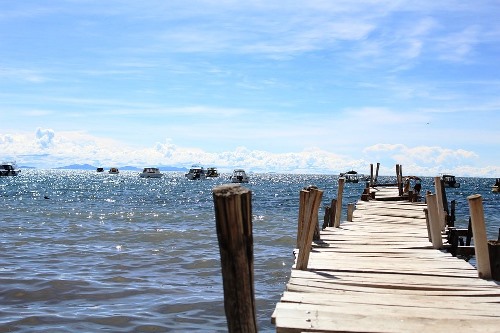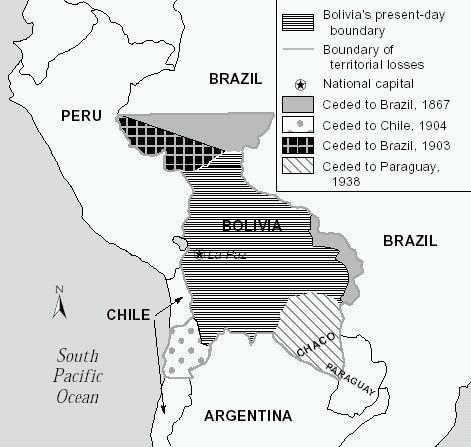|
Landlocked Bolivia's Day of the Sea 
ESPAÑOL Day of the Sea is celebrated every 23rd of March in Bolivia in commemoration of the loss of the “Litoral”, an extensive deserted region approximately 120,000 square kilometers in size running along the Pacific Coast, which Bolivia lost in the War of the Pacific, involving three countries: Bolivia and Peru against Chile in 1879.
The conflict began as a territorial boundary dispute after the fall of Spanish colonialism, as Chile, Bolivia and Peru were in the process of becoming independent nations. Previously known as the Viceroyalty of Lima and the Charcas Audience, after 1832 a series of political, military and economic interests led to confrontation. What initially detonated the conflict was Bolivia’s intention to charge a 10-cent tax per 100-pounds of potassium nitrate (saltpeter) harvested by Chilean companies in the Atacama Desert. The Chilean government did not accept this Bolivian decision and ordered its troops to invade the Bolivian regions of Antofagasta and Calama, where Bolivia had no military presence and most of the population was of Chilean descent. It is because of the Battle of Calama that today we celebrate the Day of the Sea. With just under a hundred soldiers, Commanders Eduardo Abaroa (Bolivian) and Ladislao Cabrera (Peruvian) faced over 500 Chilean soldiers. Abaroa was obstinately defending a small bridge over the Topáter River, when on the 23rd of March 1879 the Chileans ordered him to surrender. His response was “Que se rinda tu abuela!" which means, "Me, surrender? Tell your grandmother to surrender!” after which he was promptly shot dead.
Chile outnumbered Bolivian and Peruvian troops and soon won the battle. Its army was better equipped and defeated Bolivia definitively in the Alto de la Alianza Battle on 26 May 1880. Bolivia retreated from the war, which ultimately lasted until 1883. During this time Chile also defeated Peru and its capital city was occupied by Chilean soldiers for over a year. In 1904 a three way agreement was signed. According to the treaty, Bolivia ceded its coastal territories to Chile. This treaty remains valid even today, although over 120 years later Bolivia continues to insist on revising it and Chile continues to resist doing so. Today this date is celebrated with solemn acts throughout the country. A floral offering is made at the statue of the Hero of Topáter (Eduardo Abaroa Plaza) in La Paz. Usually this is presided by the President, government ministers, members of parliament and other authorities. After a short Tedeum there are parades by the military and school children. All important cities in Bolivia have a plaza named after Eduardo Abaroa; therefore, similar solemn acts are held nationally. Students paint posters and do other school projects in reference to this date and there are proclamations, dances, and fairs in the streets and neighborhoods, especially those that carry the name Abaroa or 23 de Marzo. In addition, Bolivia’s lost territory is also commemorated during national beauty pageants, with one contestant being named Miss Litoral. Thankfully, Bolivia has several large lakes, including Lake Titicaca (as seen in the photo above) and many rivers and lagoons in our Eastern tropics, so there is no shortage of beaches for fun. However being landlocked and having no ports of its own has greatly affected Bolivia's economy. Correspondent: Alura Gonzales Click the map for the history of Bolivia    |

